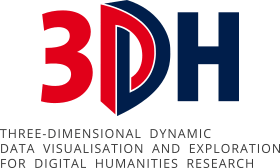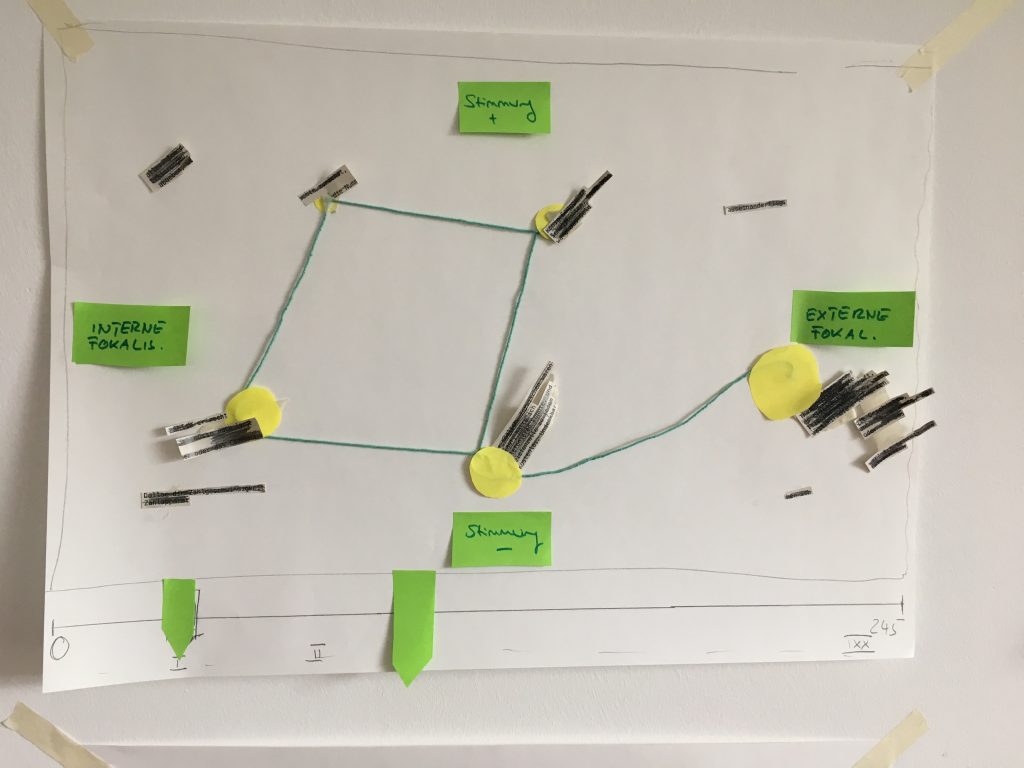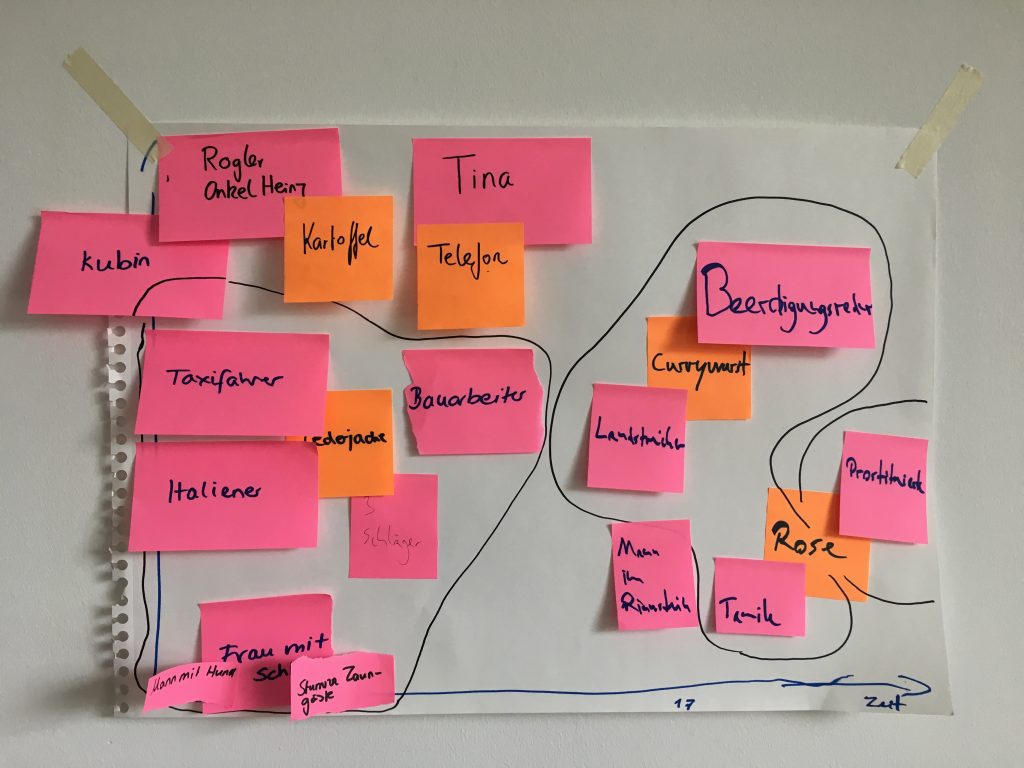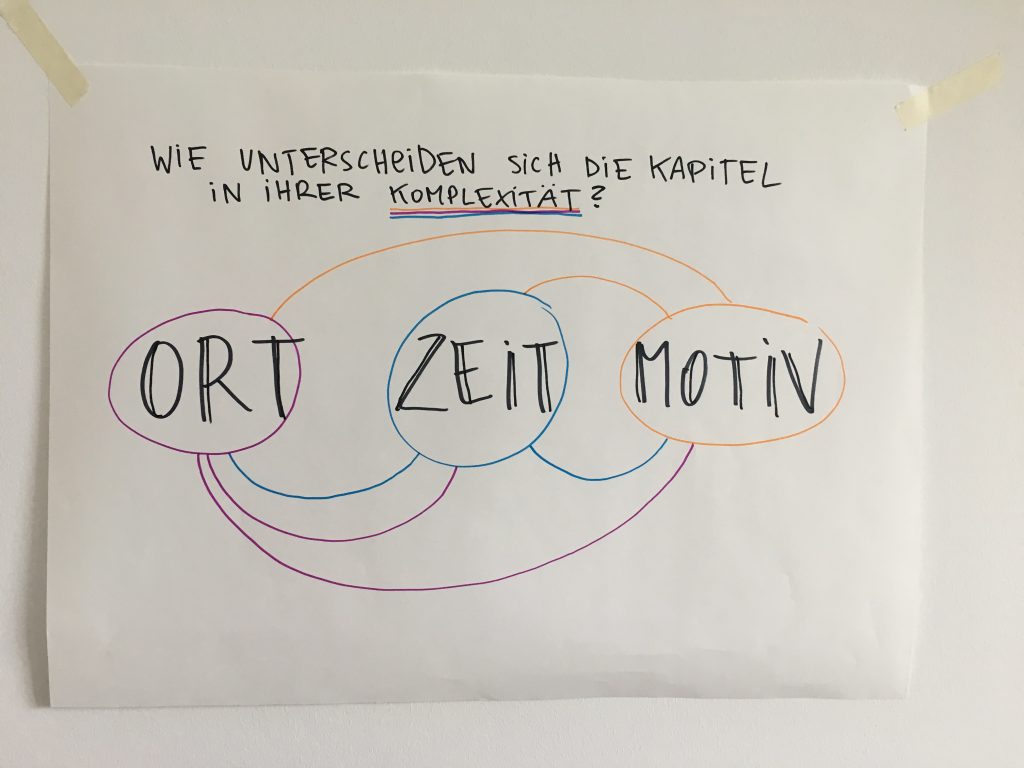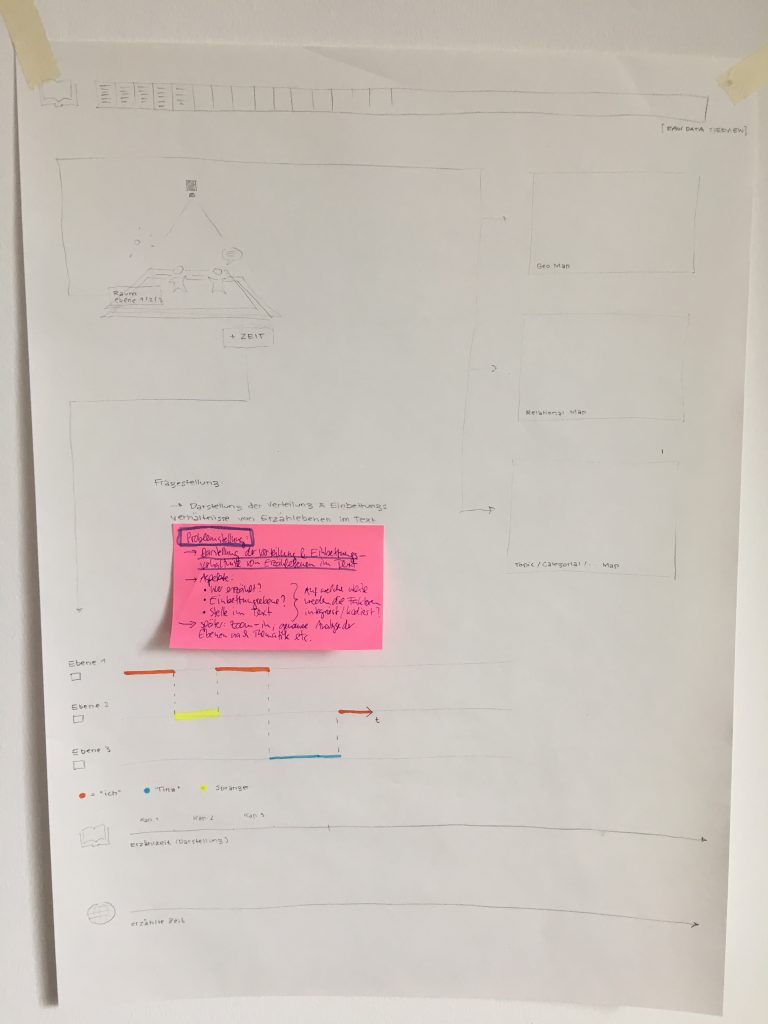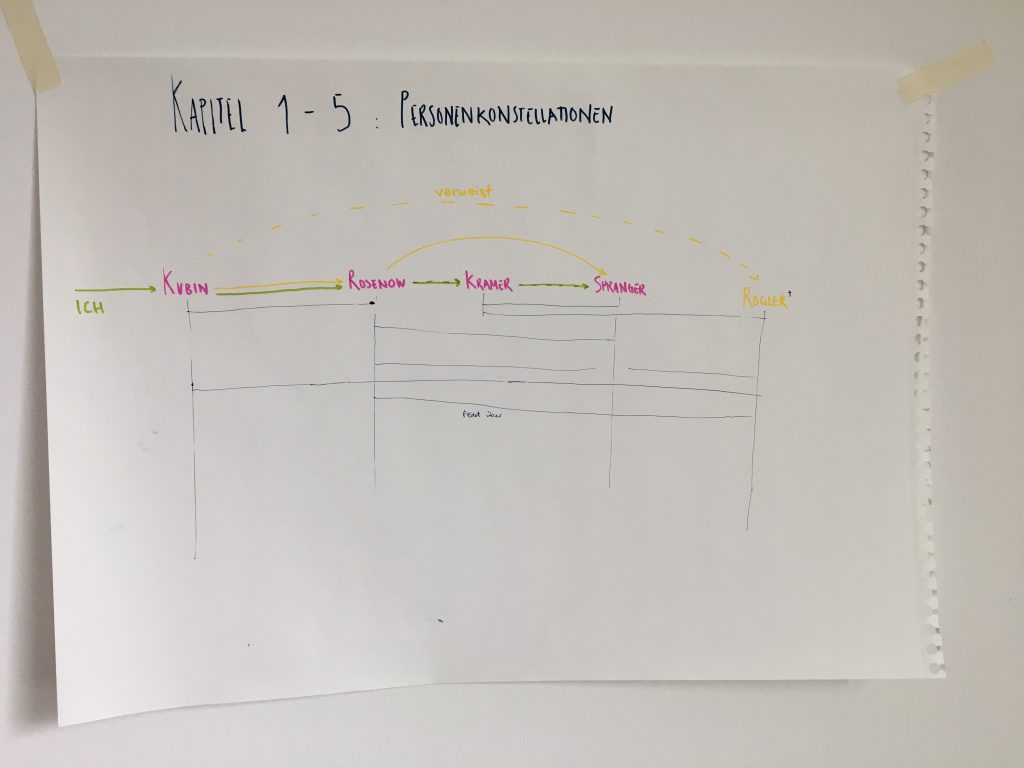First Co-Creation Workshop in Potsdam, April 26th, 2017
The 3DH project aims to lay the foundations for a ‘next-generation’ approach to visualisation in and for the Humanities. As for the theoretical background, the project’s frame of reference are the particular epistemological principles that are relevant to hermeneutic disciplines and which must therefore also orientate our approach to visualisation.
For the 3DH visualisation concept we formulate four postulates. These are
- the “2 way screen postulate” (i.e. an interaction focused approach toward visualisation);
- the “parallax postulate“ (i.e. the idea that visualisation in and for the humanities should not just tolerate, but actively put to use the power of visual multiperspectivity in order to realise epistemic multiperspectivity);
- the “qualitative postulate” (i.e. the idea that visualisations should not just ‘represent’ data, but also offer a means to make and exchange qualitative statements about data);
- the “discursive postulate” (i.e. the idea that visualisations should not just be used to illustrate an already formed argument or line of reasoning, but should also become functional during the preceding/subsequent steps of reasoning, such as exploration of phenomena and data, generation of hypotheses, critique and validation, etc.).
During the 2016 summer term we organized a public lecture series on DH visualisations (see also 3DH blog and https://lecture2go.uni-hamburg.de/l2go/-/get/v/19218).
One outcome of the lecture series was a need for bringing in the expertise of visual design specialists. By bringing together the “two worlds” of literary studies and visual design we hope to transcend the limitations of our respective visual(ising) routines.
Co-teaching seminar University of Applied Science of Potsdam and University of Hamburg
In the 2016 summer term we have begun to engage in a co-teaching project with the visual design specialists Marian Dörk and Jan Erik Stange from the University of Applied Science Potsdam. Two groups of students meet during four workshops alternately held in Potsdam and in Hamburg, one a class of German literature master students (Prof. Chris Meister, Universität Hamburg), the second a class of design students (Prof. Marian Dörk). Their joint goal is to answer two questions:
- ‘In how far can visualisations be helpful for the analysis of literary texts?’ and
- ‘Where do visualisations have their place in a subjective and interpretive structure?’
The literary text under discussion is the novel Johannisnacht by the German author Uwe Timm, published in 1996. It tells the story of a writer suffering from writer’s block, who gets the opportunity to write a report about the history of the potato. As trivial as this task seems to be at first, the writer’s research becomes more and more a life-threatening and odd adventure. In a formal aesthetic interplay between narratological categories such as the narrator, the discursive parameters of time and place and metafictional elements of self-reflection, Johannisnacht stretches out the genesis and the specific functionalities of narration.
Our two groups approach this text from two different perspectives: the German literature students try to identify and define possible visualisation needs for their work in text analysis (in which they focus on some of the novel’s narratologically salient aspects). The task of the design students on the other hand is to consider the literary text as a whole and find practical solutions for visualising those of its structural features that might be pertinent to the literary scholar’s analytical needs. The combination of both approaches – the narratological/literary studies perspective with the visualisation design perspective- is our first step toward defining a specific narratological visualisation use-case.
First Co-Creation Workshop and its results
After a short input presentation on relevant narratological concepts and methods (Chris Meister) we tried to gain a first understanding of some of the novel’s structural features and then co-created first drafts of visualisations. Our sketches focused on three questions:
- What narratological questions are raised by reading and analysing the whole novel or a single chapter of Johannisnacht?
- What texts and data are required for answering this question?
- What kind of visual representation could be suitable for answering this question?
Here are our first visualisation ideas:
This sketch tries to point out the narratological category of focalisation in the course of the story.
This sketch shows an attempt of structuring the story of the novel by describing the relationship between character, narrator and narrated objects.
This group gains an access to Johannisnacht by asking ‘What generates complexity in a novel?’
This sketch shows the attempt to visualise the narrative levels of Johannisnacht.
This group focuses on the character constellation in the novel Johannisnacht: Who is talking about whom? On which narrative level is a character introduced?

